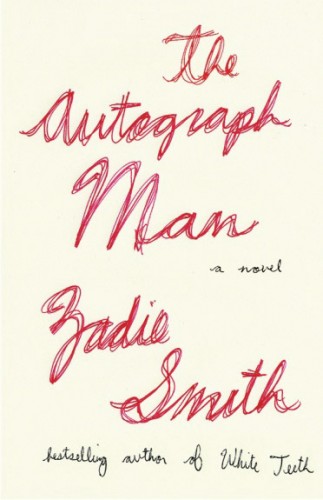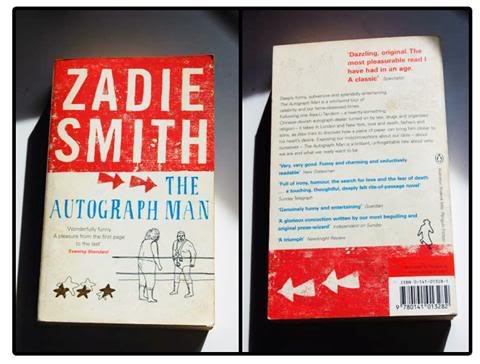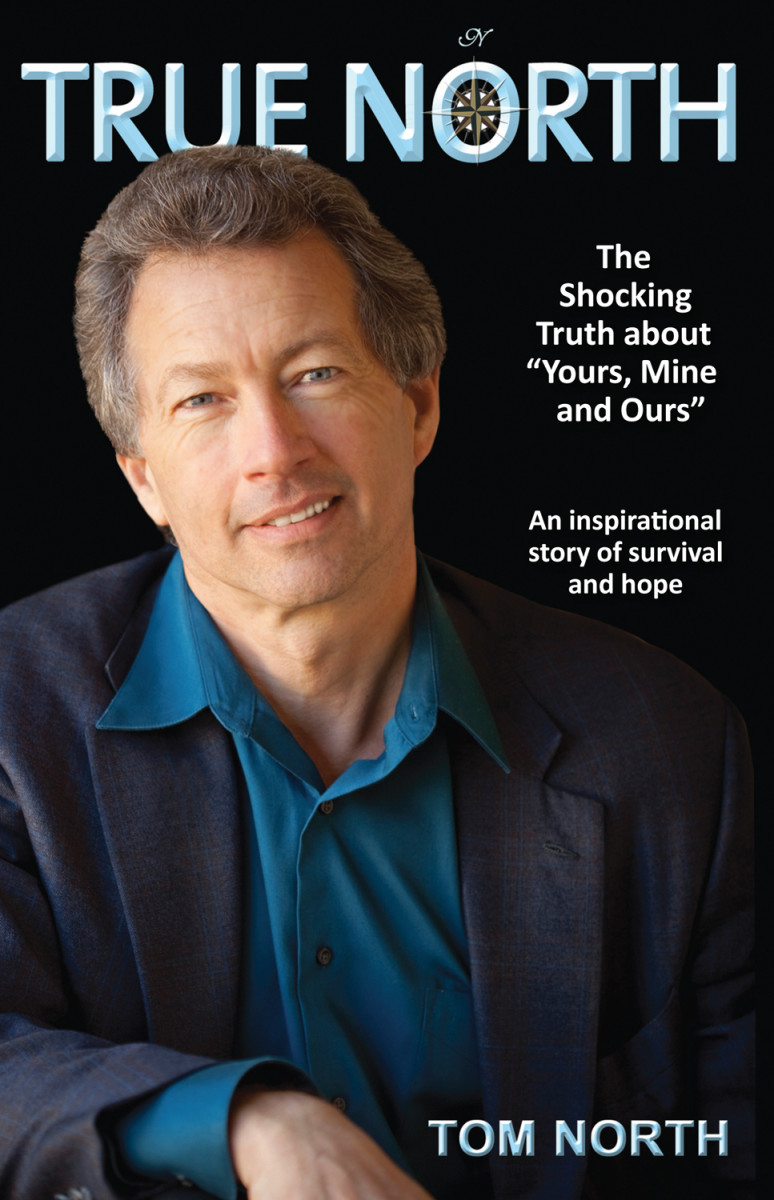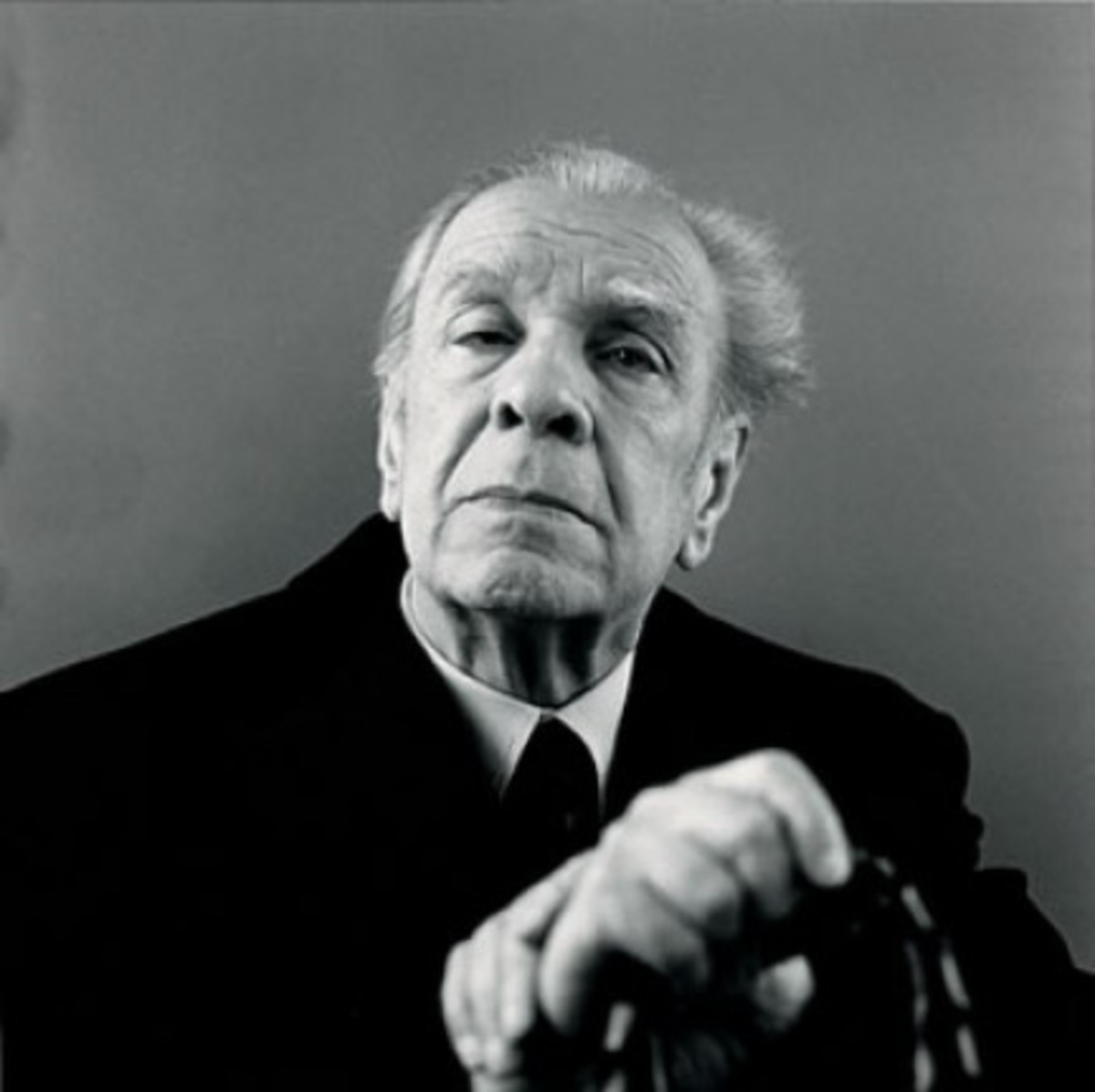Modern Literary Criticism: Zadie Smith's "The Autograph Man"
“I Want to See Movies of My Dreams”
The above is a quote from a modern rock song. It signifies a shift that is central to not only the thematic elements of Zadie Smith’s The Autograph Man but also to many aspects of Western civilization over the past several centuries. This shift began in the Renaissance with the beginning of mechanistic and scientific thought. Thinkers such as Galileo, Des Cartes, Leibniz, and Newton sought to re-examine human understanding of man and his place in the world. Scientific thought, as conceived in the minds of such thinkers, was a tool with which humanity might ascertain certainty, clarity, and understanding on the true nature of man and the world’s co-existence. Scientific thought, however, proved to be much more than that. It was the basis of, that is the ground in which the industrial revolution, technology, and the modern concept of labor have their roots.

With this evolution of mechanistic thinking, two things happen in relation to man, technology, and their places in the world. First, as a cursory examination of the BBC’s program line up will tell you, mechanistic thinking has failed in its attempt to replace religion, myth and superstition with scientific fact. It has rather become the birthplace of the modern medium for myth, religion and superstition. This completely contradicts theories on the behavior of the enlightened man, and the claims made by the fathers of scientific thought that science is the dissolution of myth. Religion, Myth, and Superstition have not only survived Science, but have subverted its claim to authority.
Secondly, in giving birth to not only technology but also the industrial revolution, and the modern concepts of labor, mechanistic thought has subverted its original inception as a tool to aid man in his understanding of nature. Through the triumph of free-market capitalism and the assembly line, industry has exploded over the last 150 years. This explosion has had a profound effect upon labor and the relationship of the laborer to his or her labor. Sociological studies have shown that “standardization and the mechanization of production inherent in the economics of scale resulted in routinization and deskilling of large portions of the work force” (Dimitrova 203). A cursory examination of modernist thought and literature, or even a stroll through contemporary London, give countless examples of the alienating effects of not only such routinization and deskilling of the average man, but also the fruits of such routinized and deskilled labor. As Marx foresaw when he said of such labor, “[It] is external to the worker; it is not part of his nature; consequently he does not fulfill himself in his labor, but denies himself” man’s relationship with himself, his fellow man, and nature has been subverted (124-125). Such unilateral subversion results in the alienation of an advanced society from its labor. As mechanistic thought has taken hold through technology the alienation between the average man and his work has deepened. The average man is further alienated from the object of his labor in today’s technological marketplace. This alienation is manifest within man as “powerlessness, meaninglessness, normlessness, isolation, and self-estrangement” (Dimitrova 206).

These two subversions, the first of mechanistic thinking by man in his essence and the second of man in his essence by the alienating effects of mechanistic thinking, become a large part of the confusing context in which modern man, if he will at all, must confront his own alienation. The question then becomes, how does man handle his own alienation? The answer to this question and to understand the manifest reality of such alienation resulting from the principals already discussed are the thematic subjects of Zadie Smith’s novel, The Autograph Man . It is in the peculiar manifestation of such subversions and alienation that the meaning of the title of this essay becomes evident: This quote contains both the alienation of man from himself and the means of this alienation. He is alienated from himself in that he no longer wishes his dreams to become a reality, but rather wishes he could see them larger than life, more real than real, or as Smith would put it, in “Technicolor” (250). The means of this alienation is technology. Here the term technology refers not only to the evolution of mechanistic thinking into a new reality, but also both the two types of subversion associated with the relationship between human beings and technology. Man, in his essence, is as wrapped up in religion, myth, and superstition as any time in history, but now these issues, along with their values and significance are confused by the blurring of the line between actuality and appearance, between virtual and physical, between reality and myth. This is the plight of modern man; this is the plight of Alex Li-Tandem.
Smith’s novel, through the plight of Alex Li-Tandem, the main character, explores the various manifestations of alienation, technology, religion, meaning, fame, media and their interrelatedness. Alex Li-Tandem is 27 years old. He is half Chinese, half Jewish. He makes his living by buying, and selling autographs of celebrities. He has three significant friends who were all present at the death of his father at a wrestling match when they were boys: Adam, a “freak, Black, Jew kid” who grows in a pot smoking Jewish Mystic; Joseph, a one time autograph man turned alienated worker in the insurance industry; and Rubinfine, an overgrown bully turned Rabbi (Smith 109). Alex’s girlfriend, Esther, is Adam’s younger sister. She is bald and has a pacemaker. Alex is obsessed with two things: the autograph of aging Hollywood actress Kitty Alexander, and a book he is writing that divides the world into two categories, “Jewish and goyish” (Smith 76). It is the uniqueness of Alex’s situation that makes his plight work as a symbol for the plight of modern man. It is important to note that it is Alex’s plight, not Alex himself that is representative of the plight of modern man. This plight is marked by the clash of cultures and realities that is a manifestation of the effects of technology on human reality. These clashes make up the dense thematic subtext of the work.
Read Zadie Smith on a Kindle!
For the purpose of analyzing such themes within the work, these themes must be understood in the historical/social context set forth already. This analysis must also take to understand Alex’s plight and its symbolic relationship to the plight of modern man if the novel as a whole is to be grasped. Such a grasp of the work as a whole is essential to meaningfully interpret the themes within in their relation to Britain and the rest of Western Civilization.
In order to insightfully analyze these obviously complex themes in the novel, forming groups of similar themes under generic headings becomes invaluable. To this end the thematic elements discussed within the novel will be grouped and discussed as follows: the subversion of reality by the virtual, the subversion of the authority of scientific knowledge by its ability to break its own rules through media, and lastly, the necessary relationship between celebrity and religion in modern British, and more generally all of Western Culture.
If Alex Li-Tandem’s plight is representative of modern man, and if, as philosophy and art have told us since Eliot, and even Nietzsche, modernity is a wasteland, what is Alex’s problem? Alex self-diagnoses his own problem and perhaps at the same time diagnoses modern man’s problem as well when he says “you watch too many films” (Smith 324). Technology, once it advanced to a certain point, made things possible that were never possible before. Technology gave birth to media, to film and television. How, though, did film and television develop their importance, their allure? When and how did film come to occupy such an important part of life?
A reflection Alex makes while meditating upon a “sub-Zen relaxation tape” clarifies the some of the appeal that film holds for modern man (Smith 184). “The sea has been enhanced in some way so as to lend it a musicality it never seems to possess when you are standing at its edge worrying about pollutants” (Smith 184). There are two forces revealed in this reflection. The first is the limitless possibility of the virtual to enhance anything in the physical world. The second is that the effects of the application of industrial sciences and technology can be, and are at times, environmentally detrimental not only in Alex Li-Tandem’s England, but the England of the physical world as well. Hardly a week goes by when there are not at least a few headlines concerning environmental concerns, or pollution problems in the Times. The allure the virtual has over Alex is the allure of an escape from a disintegrating reality to some place better.
Another time Alex observes about his idol, Kitty Alexander, “Death has no dominion. She will literally live forever. In our hearts, and our minds. And on film, of course—that’s the big one” (Smith 297). There are two forces at work again, the enhancement and perfect preservation of the virtual, and the slow deterioration of the physical. The virtual’s allure as an escape from reality is strengthened by a seeming permanence, or immortality possessed by the virtual. It is this quality that Alex refers to when he says, “that’s the big one”.

If this is so, it certainly means the triumph of the virtual over reality. There is no doubt that the musically enhanced virtual sea is far more desirable than the polluted English Channel. There is also no doubt that being young and alive forever is more desirable than growing old, losing control of your facilities and ceasing to exist. Technology provides the means to fool the senses into perceiving the existence of a musical sea and an eternally young Kitty Alexander. To put it in terms of Alex Li-Tandem, which is to say the plight of modern man, it is much more desirable to star in the film of your life and live in the world of the virtual than face the disillusioned reality of a modern life with a job like Alex’s friend Joseph has at the insurance agency which you know will end in the slow disintegration of your physical body.
Media, the phenomenon of the twentieth-century, provides an alternate reality which, unlike Plato’s world of forms that can never be reached, can easily be reached by turning on a television, going to a film, listening to nature tapes. It is significant to note that the favor the physical might hold over the facilities of the human body for perception is rapidly vanishing in the light of advancement of technology into the world of entertainment and virtual reality. Also, the ubiquitous intrusions of media into modern man’s daily existence, whether referring to the BBC, Sony Electronics or Hollywood, reinforce the struggle between virtual and physical within modern man’s preference towards reality.
Technology, then, has evolved in two ways. In a purely physical sense it has evolved from telegraphs and steam engines into the internet and jumbo jets. The second way technology has evolved is in its relationship to human beings. This relationship has changed from the relationship of worker and tool to one of consumer and product. This is significant thematically because it opens the possibilities of the virtual to anything that sells.
This brings up the second group of thematic elements to be dealt with: the subversion of the authority of scientific knowledge by its ability to break its own rules through the advent of media. This theme is connected with the answer to the question: in light of the alienation of modern man, what has happened to the myth, superstition, and religion that scientific thought and progress were supposed to have erased the need for?
The themes of Smith’s novel are so intricately interwoven with this question that it becomes essential to ask what is at the heart of The Autograph Man. As one critic describes it, “Alex’s story rests on one abiding central conflict: his need to own an autograph of Kitty Alexander” (Hooper 276). Another critic points out that, “we know that Alex’s search for Kitty is a spiritual quest” (Poniewozik 92). Still another critic elucidates further by calling this quest an “old-fashioned spiritual quest” (Franklin 48).
- Zadie Smith Page
If you are interested in learning more about this you and talented writer, here is a page with lots of biographical information.
If the critics are right, at the core of this modern novel is a manifestation of spirituality. Alex, in his plight, is on a spiritual quest. This statement will have further implications later on, but for now it is significant to note that religion, superstition and myth, in response to the question posed earlier, have survived. The question now becomes, how have they survived in spite of the seemingly infallible approach of science? Smith’s novel does not shrink from tackling this either. In a scene while Alex is in New York, one of his fellow English autograph collectors comments that, “In American...elevators…they don’t have a thirteenth floor…ancient superstition like that in a big modern country” (Smith 192-93). Technology and science have made an exception for superstition. They have not overcome it.
To say they have not overcome it, is not to say technology and science have had no effect upon myth and religion. In fact, the effect is so profound that the very concepts of religion, myth, and superstition take on new meaning in light of the modern technological age. Smith is aware of this intricate relationship between religion and technology or, as shall become more evident, between religion and the subject and media. As Alex busily divides the world he sees between Jewish and goyish, Smith divides her novel between “The Kabbalah of Alex Li-Tandem” and “The Zen of Alex Li-Tandem” (Smith 37, 187). It is essential to note that even though both Smith and Alex’s books have the form of traditional religious texts their subject matter is quite different. Alex’s book has subjects such as “the lyrics of John Lennon” (Smith 76). And Smith’s book is filled with so many allusions to film, television, music, media, and culture that one starts to get the feeling Smith is suggesting technology, through media, is a kind of religion.
This theme, media as religion, is one of the largest themes in the novel. It manifests itself in the nature of Alex’s quest; “his pursuit of [the] Holy Grail” is a pursuit for an autograph of an actress (Hooper 276). It is a quest for fame. Fame, because of the properties it has inherited from technology: first the ability to improve upon reality, and secondly its triumph, through media, over age and death, is the modern promise land. Alex, as reverent as any Kabbalistic Jew, cannot help but show his devotion in the presence of his idols, “Alex could see the twenty-foot face of the popular actress Julia Roberts, the persistent vein in her forehead, the smile more radiant than Buddha’s. Alex had a strong urge to kneel” (Smith 154-55). This illustrates the complexity of the third thematic group: the necessary relationship between celebrity and religion in British and all Western Culture. Smith realizes this relationship in her novel most noticeably as “fame [substituting] for religion” (Poniewozik 92). Celebrity becomes a sort of demigod. This is for two reasons. First, appearing godlike on a twenty-foot screen, and living beyond one’s own demise, defeating death. These are abilities reserved for the gods in pre-technological times. Secondly, despite the “televisional sheen” of “infinite repetition” seeing ones personal idol of celebrity is as likely to happen as encountering god on the way to Damascus (Smith 251). This creates a shroud or veil between the celebrity and the fan similar to the Jewish concept of the curtain that separates them from YHWH. “A man wavers between awe and rage at the very famous, as he does at the idea of God” (Smith 153).
This is the significance of Alex’s quest for Kitty’s autograph. Autographs are, as Joseph puts it in disbelief, “religious relics or something” for Alex (Smith 319). Religion gives meaning. Alienation strips man of meaning. This confusing relationship between religion and technology has something to do with the relationship between human beings and their want of meaning. Though Smith plays all around this connection, she never clearly makes it.
Some critics argue that when Alex Li-Tandem finally does meet Kitty Alexander, “his worship of celebrity has been rewarded with a genuinely mystical experience: a spiritual communion” (Franklin 50). If this is so then Smith’s portrayal of Kitty Alexander as a warm, genuine individual becomes symbolic of the nature of deity within a system that treats celebrity as religion. Even if this were not Smith’s intent, it would be hard to argue that most developed and prolonged examination of a celebrity within a work that treats celebrities as demigods is not at least somewhat exemplary of the society she comes from. Such a positive image of Alex’s idol does not take into account Alex’s behavior within the novel.
It must be hoped to understand Smith’s thematic intent with the work as a whole. Alex’s behavior, in view of his embodiment of the themes already discussed, becomes an important clue to understanding Smith’s attitude towards those themes, or tone. Alex Li-Tandem is the most unstable character in the novel. He is having an affair behind Esther, his girlfriend’s back. He totals his car while on an acid trip. He flies off to New York on a foolish quest for an aging movie star the same weekend Esther is having open heart surgery. He goes out and drinks himself into a stupor when he should be telling Kitty about the reports of her death. Ultimately, he is even unable to find any meaning in the memorial service for his father.

The picture Smith gives us of Alex is one of “powerlessness, meaninglessness, normlessness, isolation, and self-estrangement” (Dimitrova 206). This description of alienation is the picture of Alex Li-Tandem at the beginning of the novel and at the end of the novel. Throughout the novel, the reader cannot help wanting more out of Alex’s character. He continually disappoints and perhaps here in lies his significance. As seen as representative of modern man’s plight, Alex Li-Tandem is a disappointment. This disappointment mirrors the disappointment of human beings in religion, myth, scientific thought, technology and celebrity. Smith’s novel is an interpretation of the disappointment of British, and truly Western, culture with itself and its achievements to this point in history. This disappointment is a want of meaning. The theme of humanity’s want of meaning, without her attempting to present a clichéd solution, is beautifully depicted by Smith through Alex’s earnest attempt to convince himself that “Life is not just symbol, Jewish or goyish. Life is more than just a Chinese puzzle. Not everything fits. Not every road leads to epiphany. This isn’t TV, Alex, this isn’t TV” (Smith 151). Though there is no solution, or answer to the progress of history and man’s alienation in this statement, there is a genuineness at work that echoes of the bard-like nature of the writer’s job to record the world she lives in.
Works Cited
Dimitrova, Dimitrina “Work, Commitment and Alienation.” International Social Science
Journal. 46.2 (1994): 201-211.
Franklin, Ruth. “The Box of Tricks.” Rev. of The Autograph Man, by Zadie Smith. The
New Republic 14 Oct 2002: 46-50.
Hooper, Brad. Rev. of The Autograph Man, by Zadie Smith. Booklist 1 Oct 2002: 276.
Marx, Karl. Early Writings. New York: McGraw-Hill, 1964.
Poniewozik, James. “A Frenzy of Renown: In Zadie Smith’s New Novel, Fame Substitutes for Religion—and Witty Concepts for Emotional Heft.” Rev. of The
Autograph Man, by Zadie Smith. Time 30 Sep 2002: 92-93.
Smith, Zadie. The Autograph Man. New York: Random House, 2002.
Get Zadie Smith's Latest!
Other Hubs on Modern Literature
- Kurt Vonnegut's Version of the Fairytale Bluebeard: Writing About Writing For People Who Don't Read
Kurt Vonnegut, one of the most prolific if not best American writers of the second half of the twentieth century, first earned a reputation for himself as a science-fictionist with his early works, The Sirens... - Film and Literary Criticism: What Fight Club's Tyler Durden Has to say About Hollywood
In a post-film release introduction to the novel Fight Club, author, Chuck Palahniuk, discusses the resonance Tyler Durden has found in modern American society. The list of cultural references to and about... - Books You Should Own, But Probably Don't. Part 2: 20th Century American Literature: Postmodern Postm
This is part two in a continuing series of hubs all of which are designed to inform and guide anyone who might want to know a little bit more about the rich tradition of art, letters and philosophy we have... - Literature and The Modern Short Story: Analyzing Nick Hornby's "Nipple Jesus"
Embedded right in the center of the new collection of stories edited by Nick Hornby, Speaking with the Angel, is a story by Hornby himself. NippleJesus is the title of the work which is narrated by...














